Two days ago, on Sunday, we weighed anchor at four in the morning, left Deception Island and set course 060 for Elephant Island. There are a good 200 nautical miles between these two islands, both of which belong to the South Shetland Islands. We kept to the coast on the west side of the Bransfield Strait and gradually passed the island chain.
At the south-east corner of Robert Island, we crossed Selma’s old track, the one from our arrival in Antarctica at the beginning of February, after crossing the Drake Passage. It feels like an eternity has passed since then and we have experienced a lot.
We made another stop overnight after around 70 miles and anchored in Potter Cove, King George Island off the Argentinian station of Carlini. We will be underway enough over the next few days and nights, so a last break and a quiet night without ice navigation will do us good. As dawn breaks later, you can already tell that we are slowly leaving the south behind us.
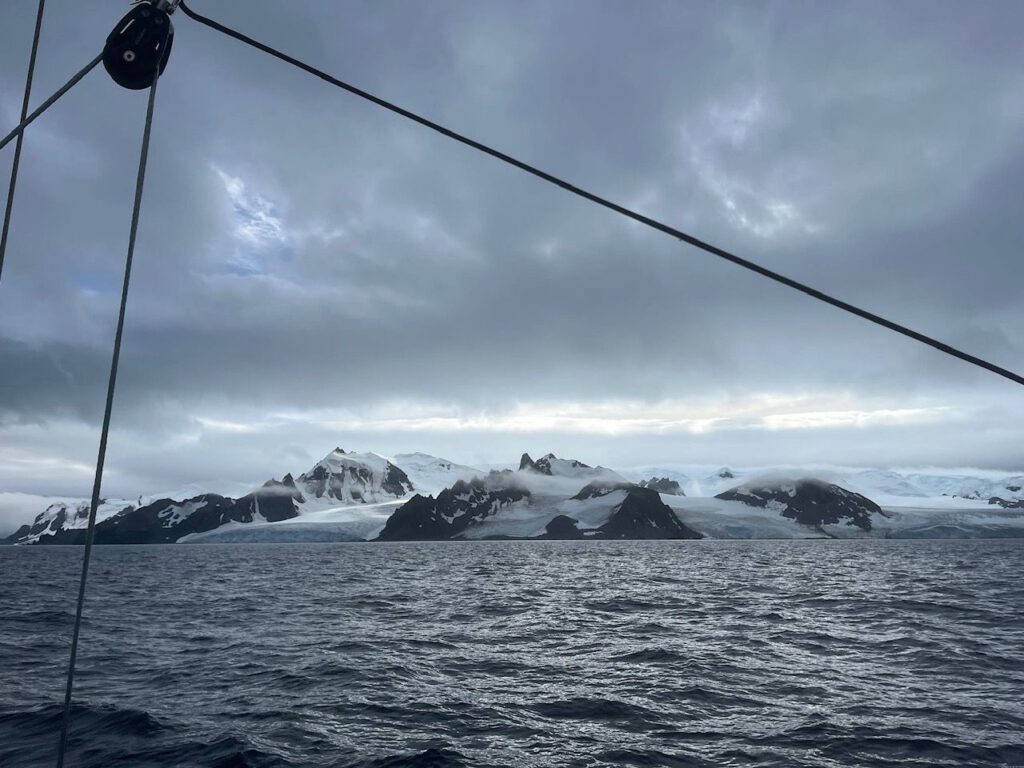

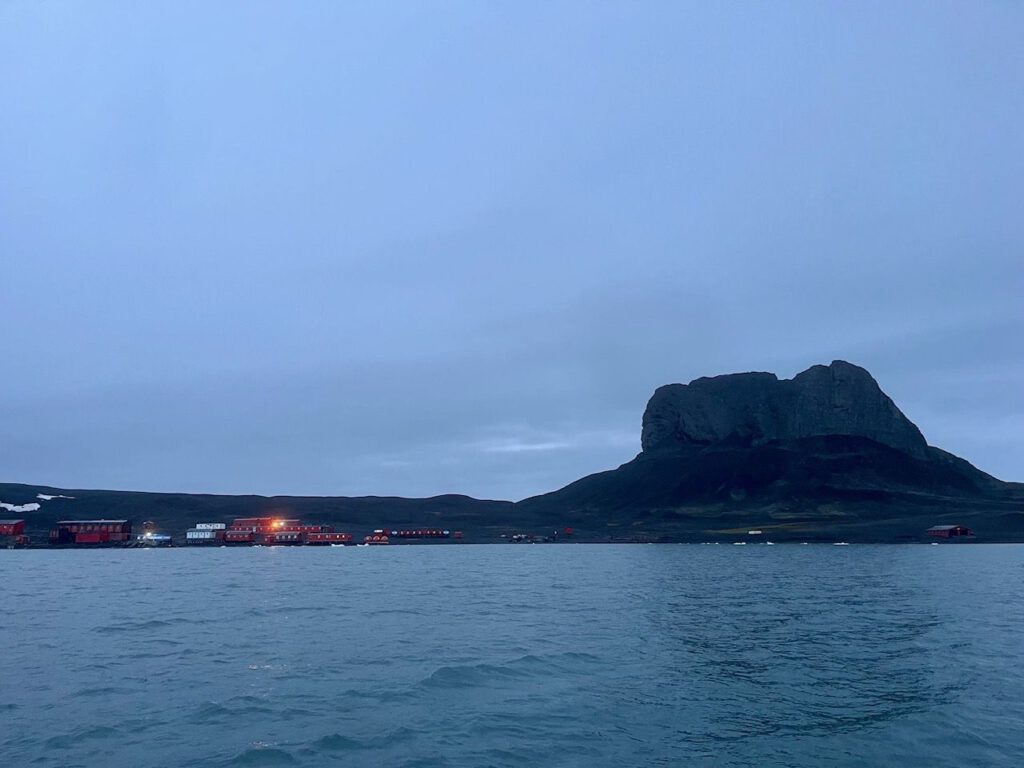
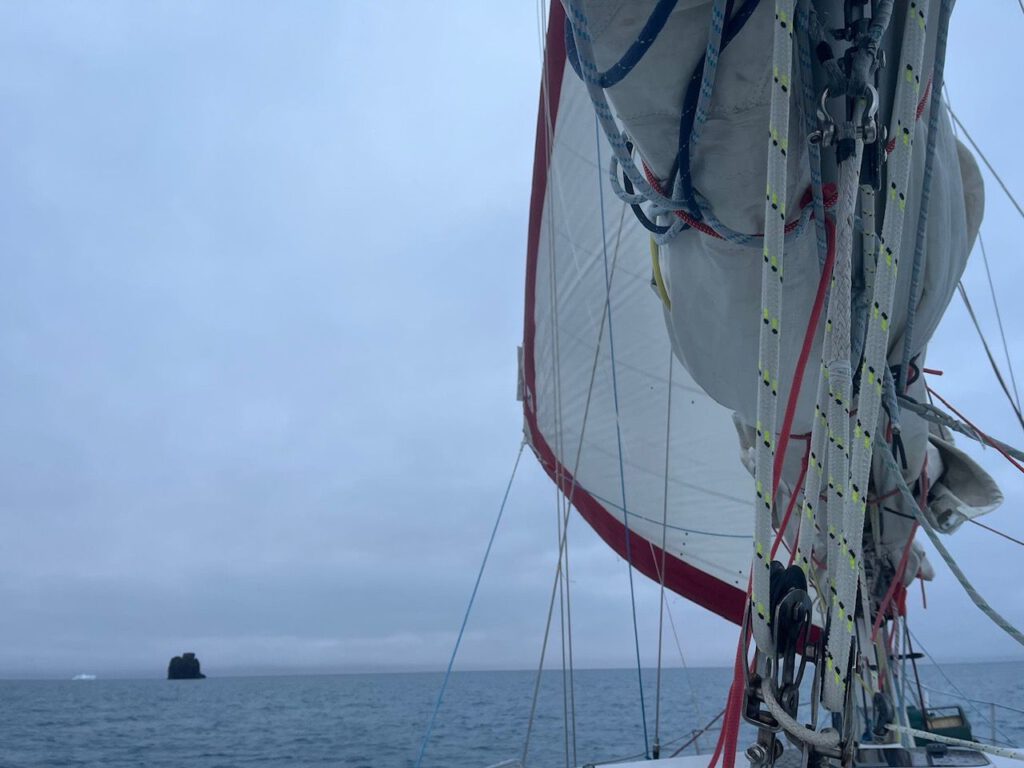
On the way along the South Shetlands we were again accompanied by many whales, blowing all around us, sometimes 10 to 12 at a time. This time it was larger groups of sei whales migrating along the coast. Many penguins – Gentoo and Chinstrap penguins – were on the move, also in large flocks, which, when the bow of the Selma came too close to them, took to their heels and shot out of the water like torpedoes. We were also escorted several times by fur seals, in small groups of three or four, leaping, swimming and diving through the water in elegant arcs.
The icebergs are becoming increasingly rare. We look forward to each one, knowing full well that one of them could be the last one we leave in our wake on our journey north. Unfortunately, we won’t encounter the colossus A23A – at 4000 km2, this is the largest iceberg in the world to date and is currently underway between Elephant Island and the South Orkney Islands.

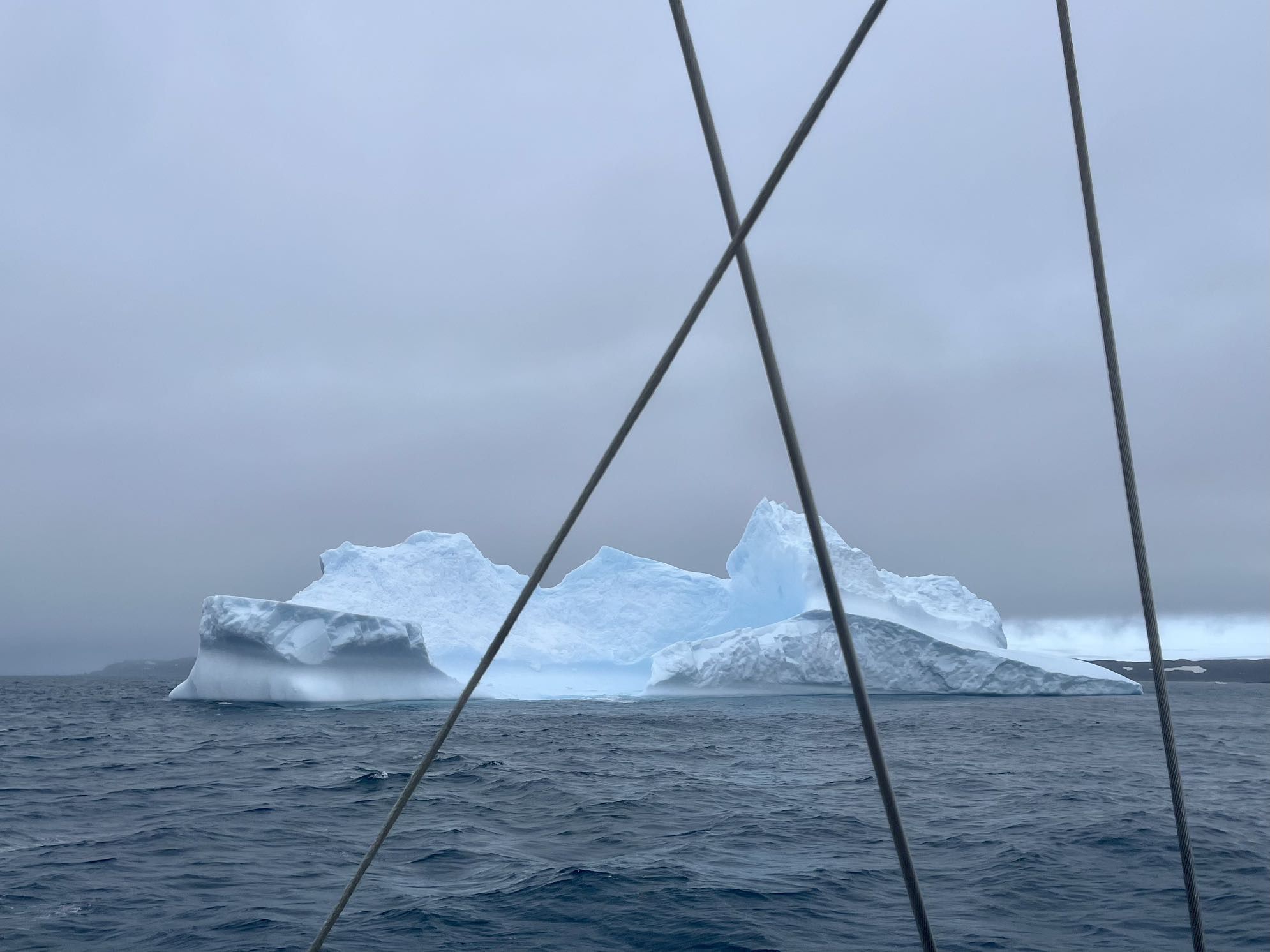
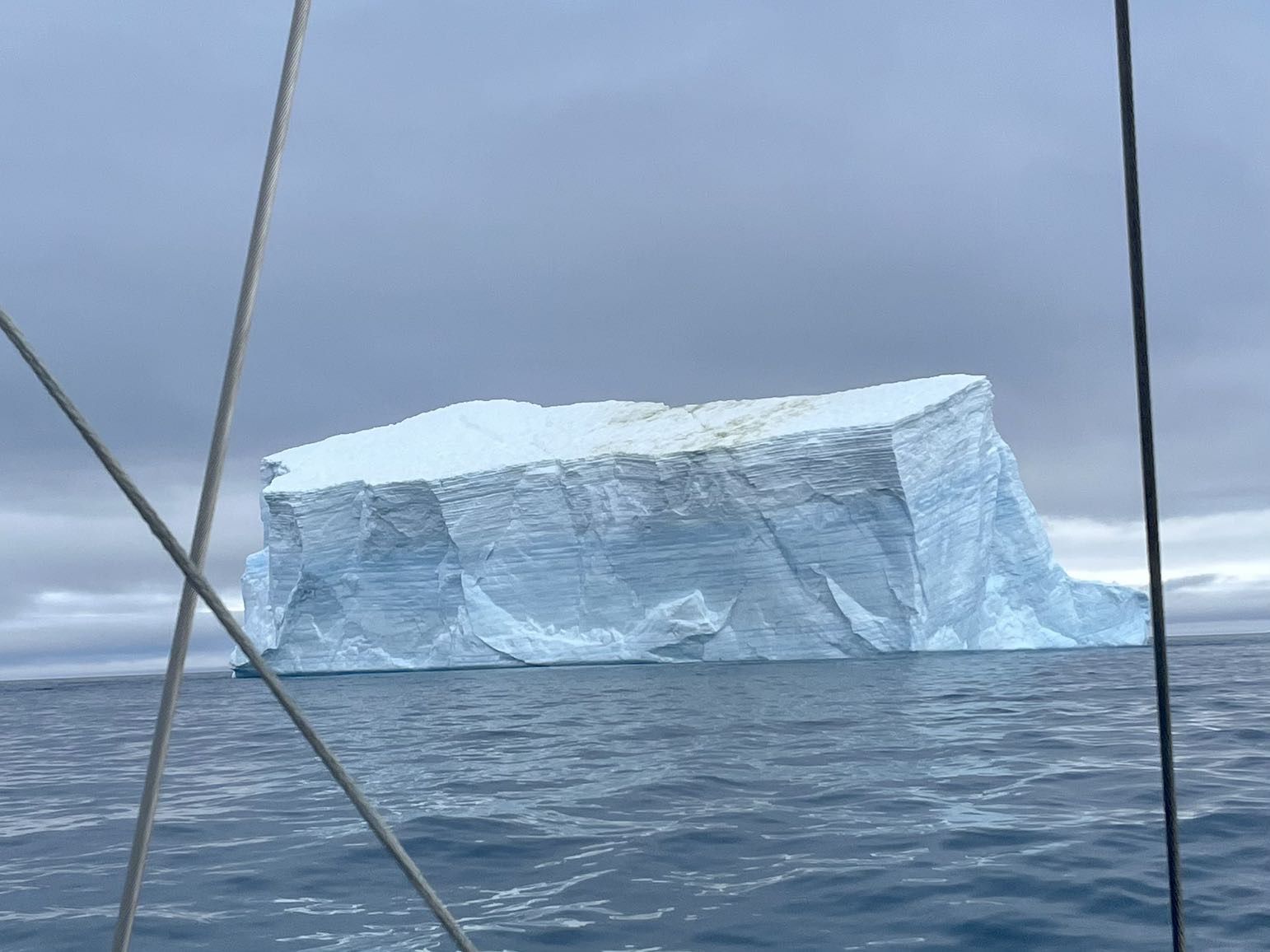

The wind picks up in the evening and we are finally out of the lee of King George Island. The open Southern Ocean welcomes us with a fairly high swell and perfect sailing winds of around 20 knots. The jib glows warmly in the evening sun, wind from 150-160 degrees from astern and the six meter wave pushes us forward. We are only making nine knots with the foresail, the Selma is rushing through the night, a huge wave, topped with white foam, occasionally roaring under us. Then it lifts us far up onto the crest of the wave and we surf down into the white spray. The sea foams and bubbles as if it were boiling. It’s great fun to be at the helm, sailing through the night, with nothing around but ocean, dancing wave crests and later even a few stars in the night sky.
Later, some ice appears on the radar. We are traveling too fast – for the ice conditions and for an arrival in daylight – and switch from the large headsail to the smaller jib.
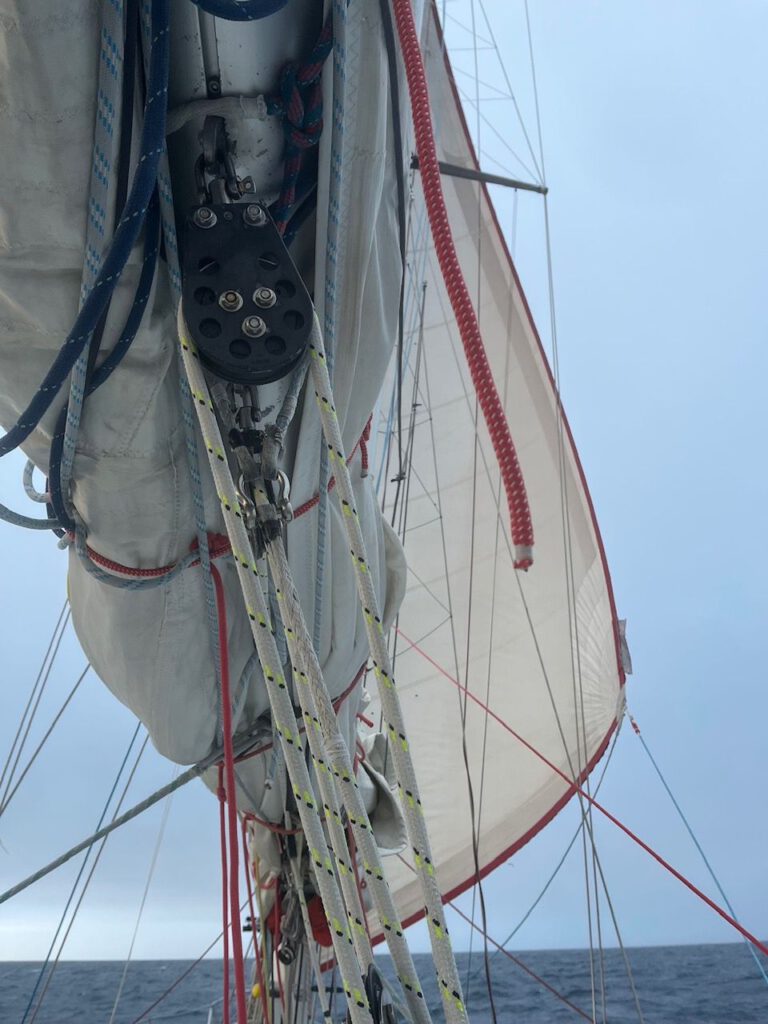

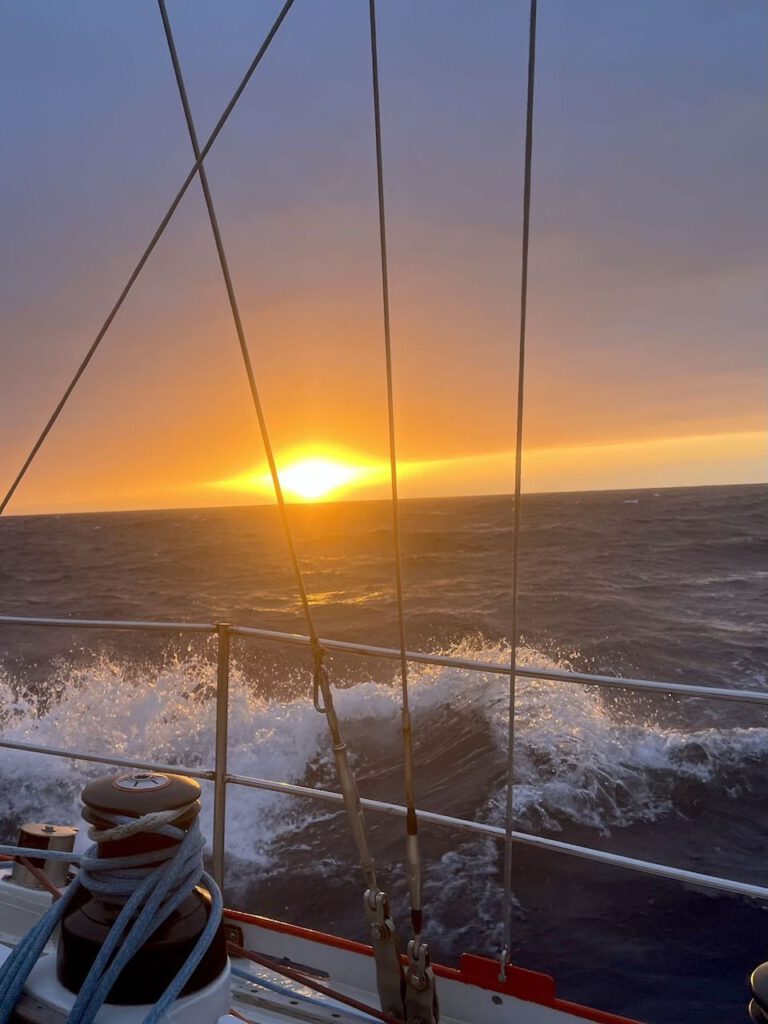
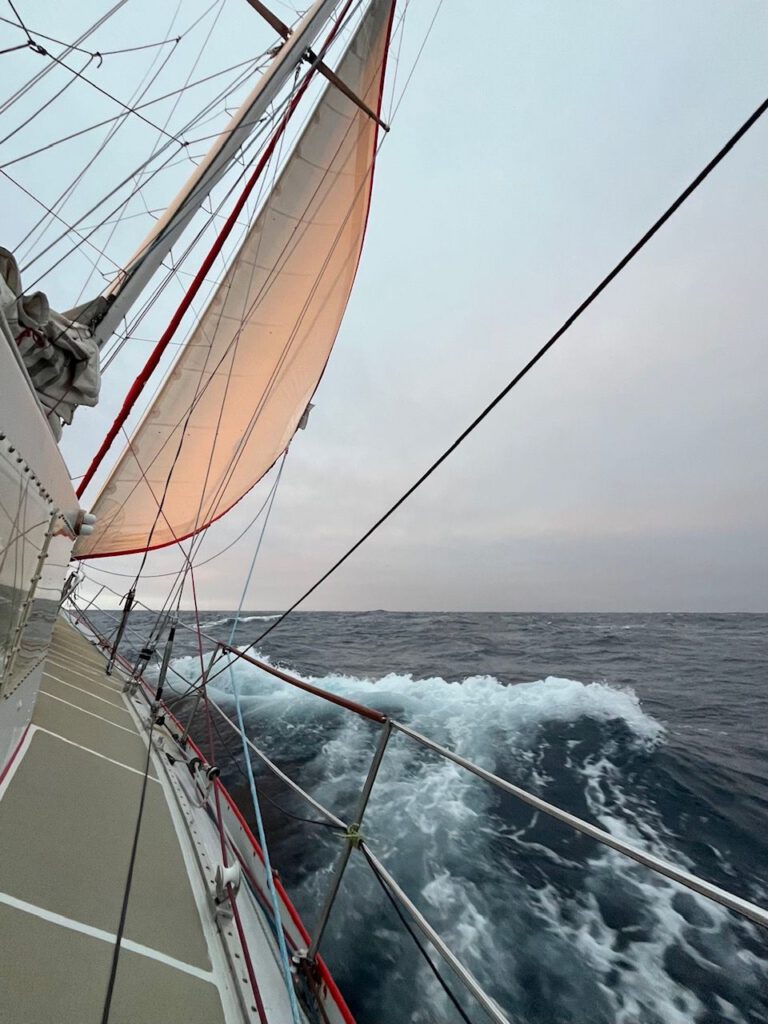
Later, even this is recovered for two hours, we run without sails in front of the top and rigging, still making three to four knots. Now it’s just wind, waves and current pushing us along. The Selma rolls unbearably from left to right, but at least it does so in line with the course. Even when we set sail again later, we remain the plaything of the high waves. We in our bunks are rolling in the same way, so a restful sleep is out of the question.
However, there are no real complaints about this: after all, after a lot of effort by Mr. Perkins, we are on our way to Elephant Island under sail.